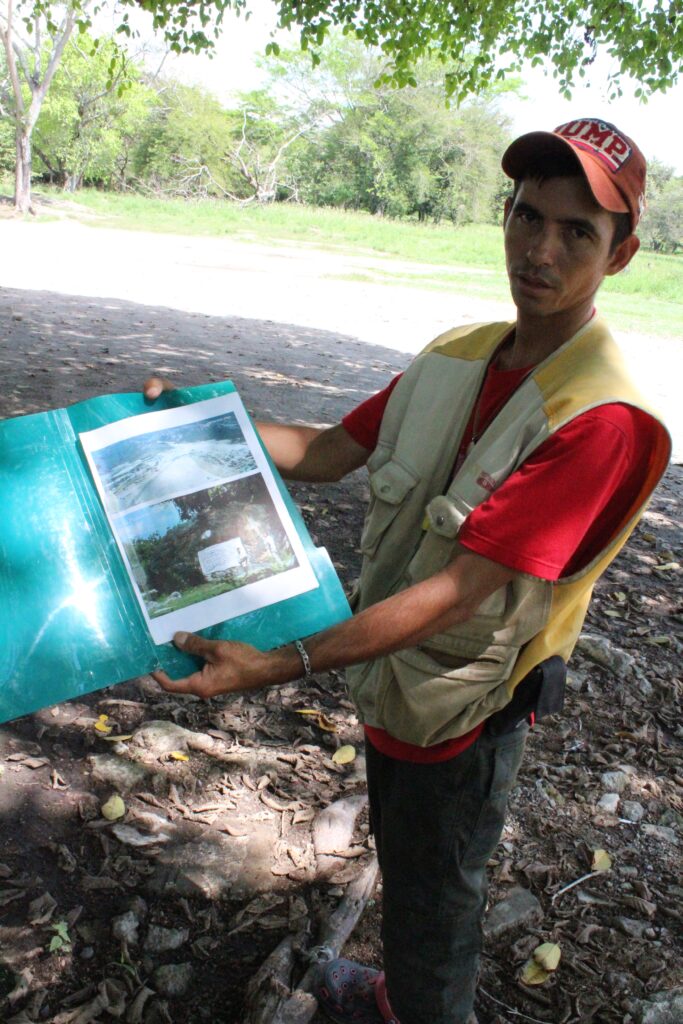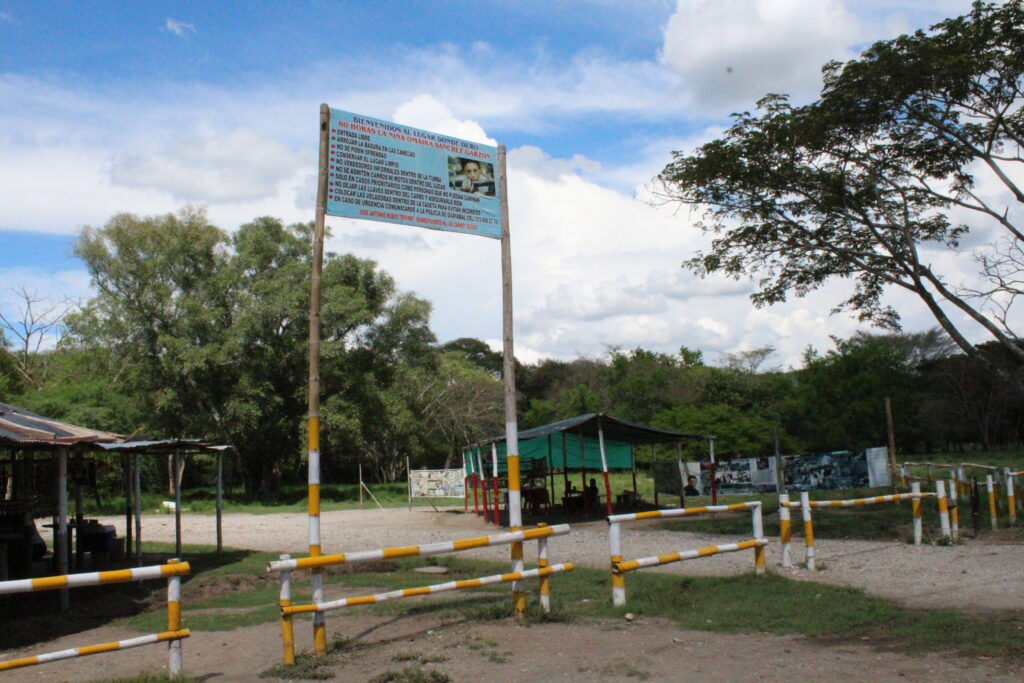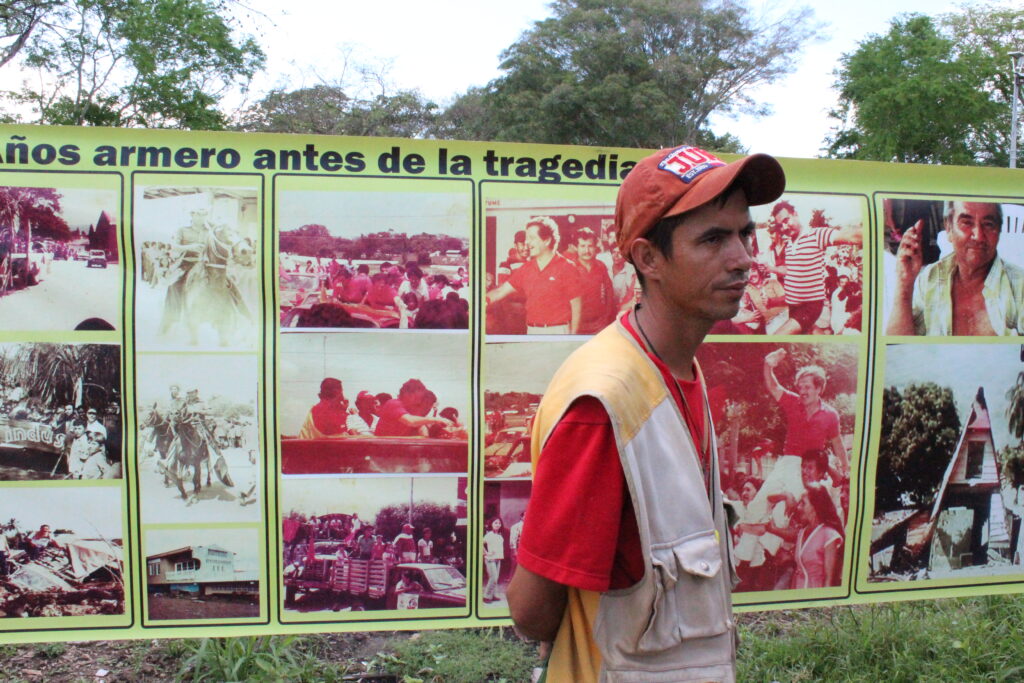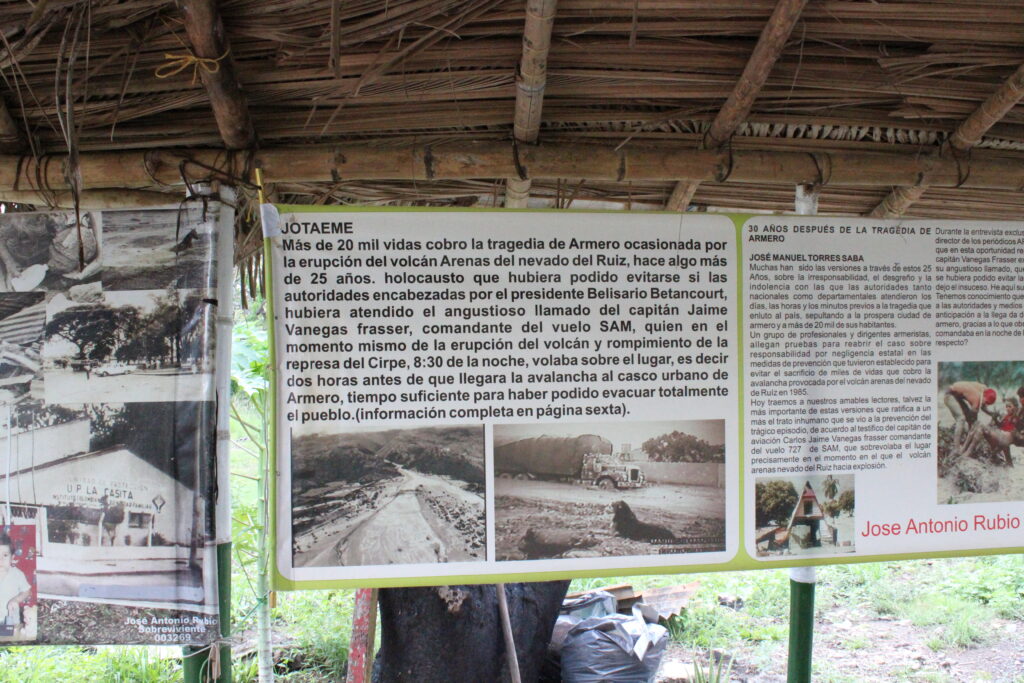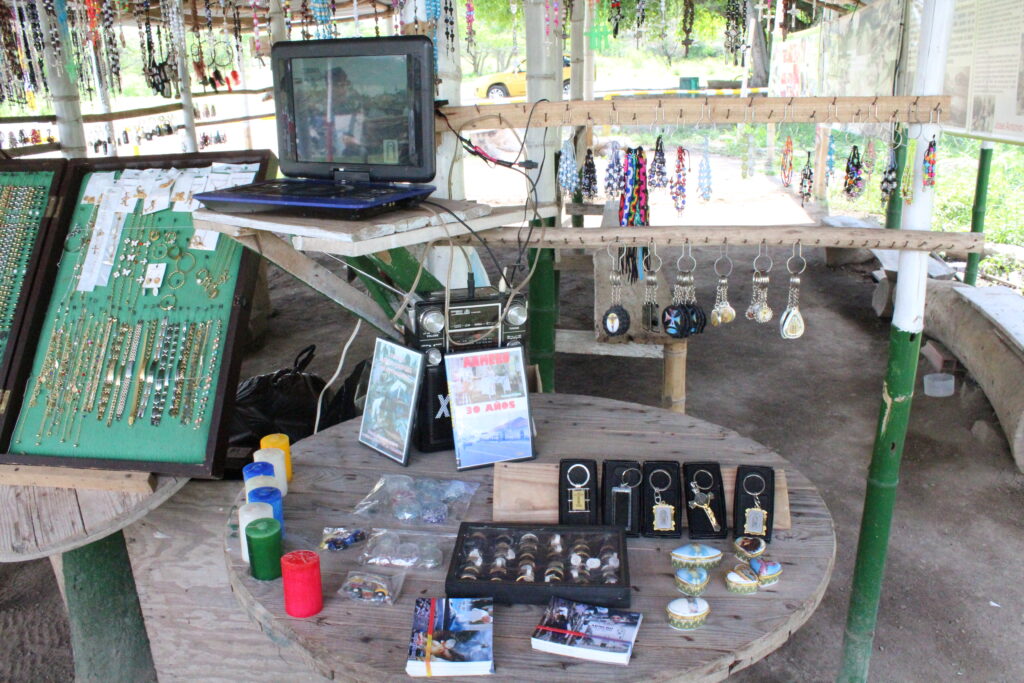I visited Armero on a sunny weekday in March 2017, accompanied by two friends and their dog, Sacha. We were taken to the site by a taxi driver from Armero Guayabal, a town some 10km north of Armero where many survivors eventually settled. At the entrance to the site, we were greeted by young men on motorbikes. They were selling pirate DVDs and ice creams. From there, we were taken to the memorial site for Omaira Sánchez, the young girl whose bravery in the face of death was broadcast to millions of viewers. The purported place of her passing is now host to makeshift stalls run by vendors who tout souvenirs and information.
The man pictured — José — took us on a scripted tour of the site and answered our questions to the best of our abilities. Like many of the guides, José is not a disaster survivor (although others are reported to claim so, wrongly). His information came in part from local sources, and in part from television programmes, newspapers, books, and the internet. In a region dominated by an informal economy, where stable and formal employment is rare, he is one of many who make their living from the Armero tragedy.
